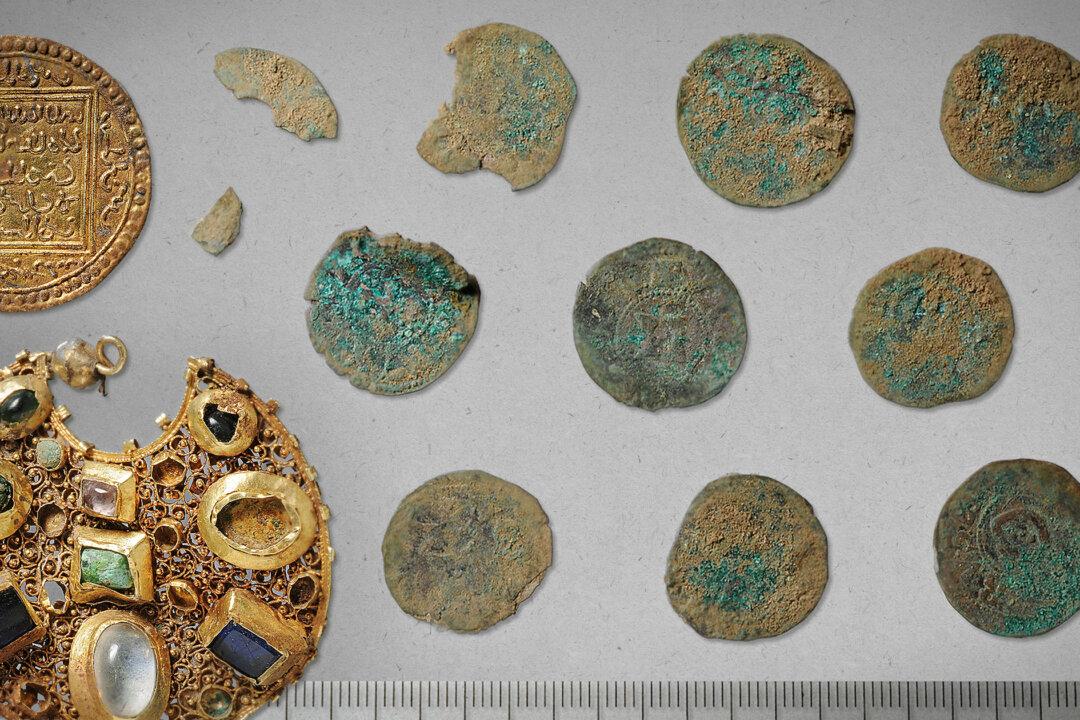The traveler deposited the stash of gold, jewels, and silver coins near the Viking burial mounds in Haithabu some 800 years ago. Whoever that traveler was, and for whatever reason, he or she never returned to collect their treasure.
Just recently, this hoard of precious items has again seen the light of day after it was found by a volunteer metal detectorist in a farmer’s field southwest of Schleswig, Germany, a press release stated.






